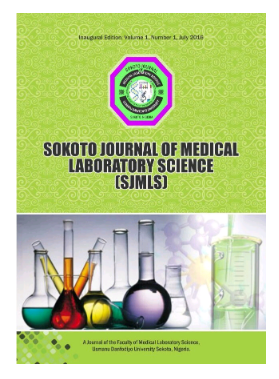Long-Term Tartrazine Azo dye (E102) Exposure Altered the Concentration of Blood Corpuscles and their Indices in Male Albino Rats
Keywords:
Tartrazine Azo dye, ADI dose, Platelet and Platelet Indices, Red Blood Cells and Indices, White Blood Cells, and Differentials.Abstract
To evaluate the chronic impact of tartrazine (E102) on red blood cells, haemoglobin, haematocrit, white cells and differential white cells, platelets, platelet indices, red blood cells, and red blood cell indices in albino rats. Eighty (80) male albino rats of average body weight of 0.15 kg were used as experimental rats in the study. The 80 experimental rats were divided into control and treatment groups. The treatment group was further divided into phase 1: made up of 17 rats, phase 2: made up of 25 rats, and phase 3: made up of 17 rats. While the control group; made up of 21 rats. All groups were put in separate ventilated cages and allowed to acclimatize to the new environment. Freshly Prepared tartrazine (E102) solution (of industrial grade) of a single daily dose of 7.5mg/kg per body weight of rat was orally administered to each rat in phase 1; for 30 days, phase 2; for 60 days, and phase 3; for 90 days. The control group was not administered tartrazine during the experiment. The study was carried out in the Department of Medical Laboratory Science, Rivers State University, Port Harcourt, Nigeria within a period of 12 months (April 2022— March 2023). At the end of treatment duration, five (5) milliliters of whole blood specimen from each rat was collected by means of cardiac puncture into properly labeled K,EDTA bottles. Each specimen was mixed properly with a haematology mixer and then analyzed immediately using Mindray 5300 haematology autoanalyzer. Statistical analysis was performed using GraphPad Prism version 8.02 (San Diego, California, USA). Platelet showed significantly higher and lower values in 30 days and 90 days treatments respectively. The 60 days treatment indicated significantly higher values in MPV, PDW, MCHC, RDW-CV, and RDW-SD while MCH showed significantly lower value. In addition, the 90 days treatment indicated aberrations of PLTs, RBCs, HCT, HB, MCV, MCH and MCHC. PLT, MCV, and MCH showed significant decrease while RBCs, HB, HCT, and MCHC showed significantly higher values. However, PCT (%) remained undisturbed in all administered phases when compared with the control group at p<0.05. The results obtained indicate that daily consumption of tartrazine (E102) at ADI doses of 7.5mg/kg bw for periods over 90 days induced altered the plasma concentration of blood cells and their indices triggering immunological and bone marrow responses in albino rats.




